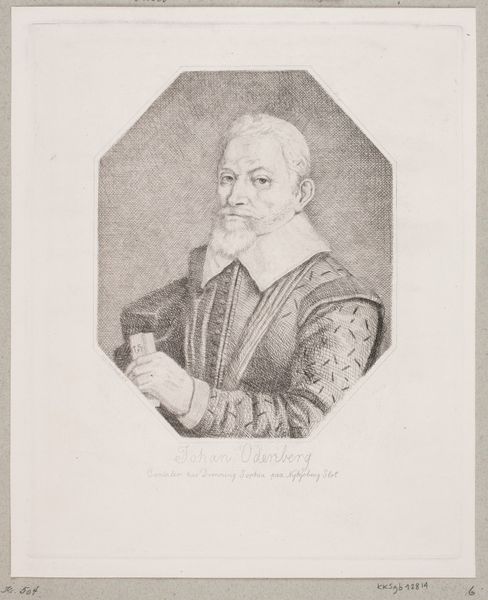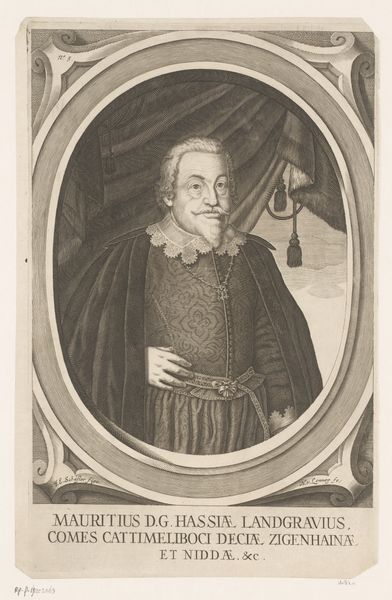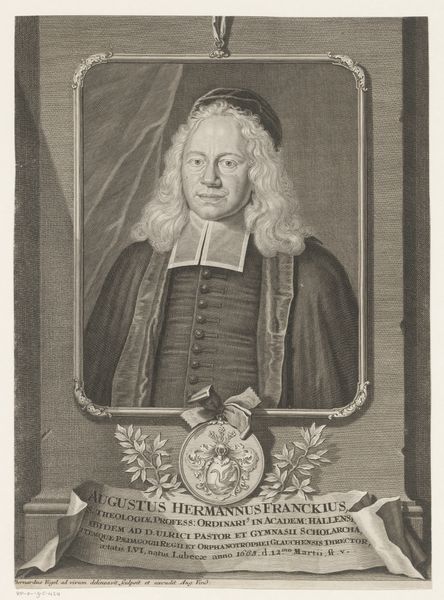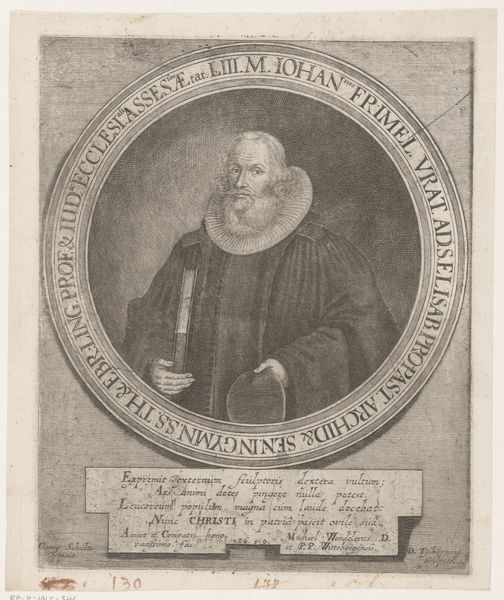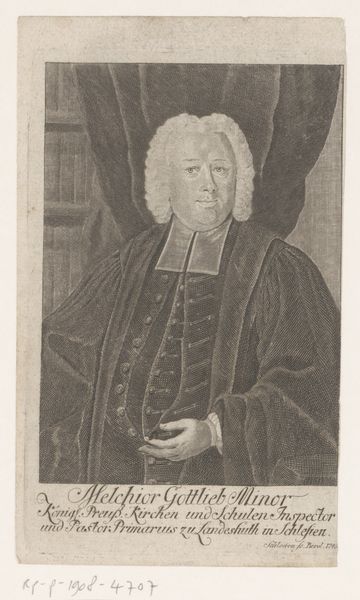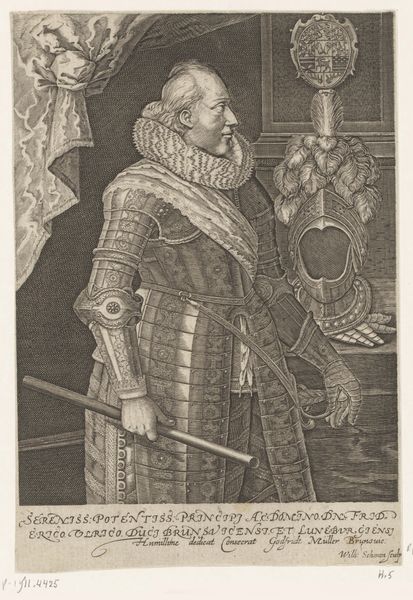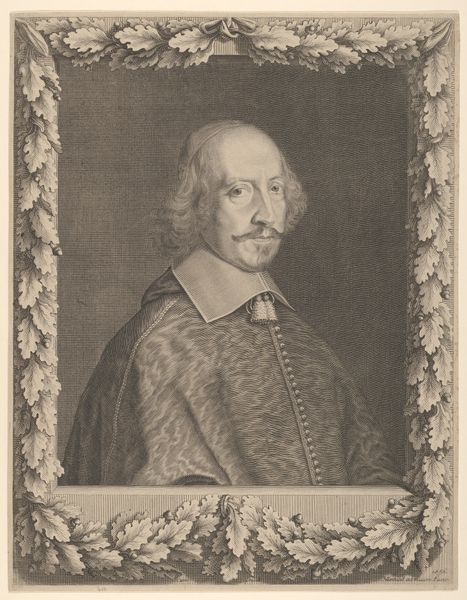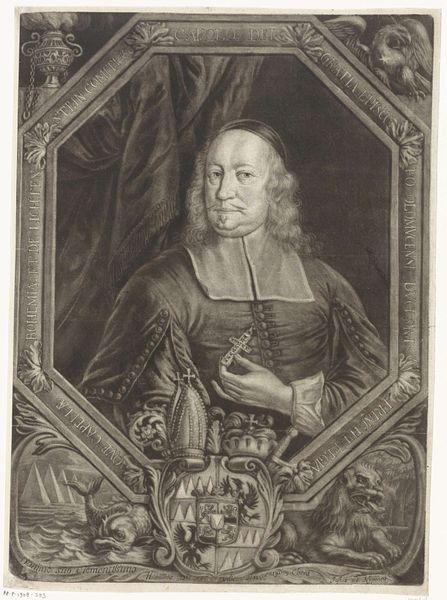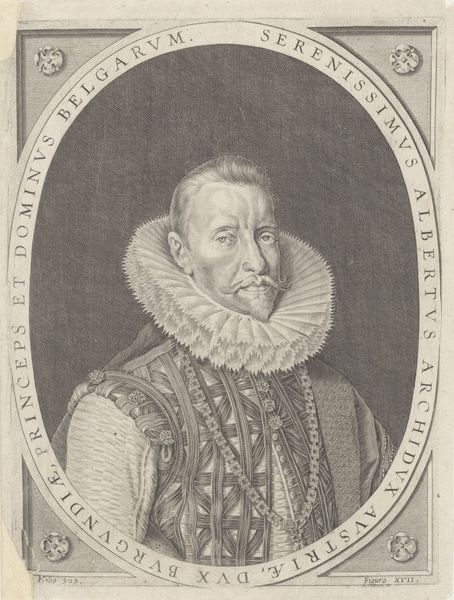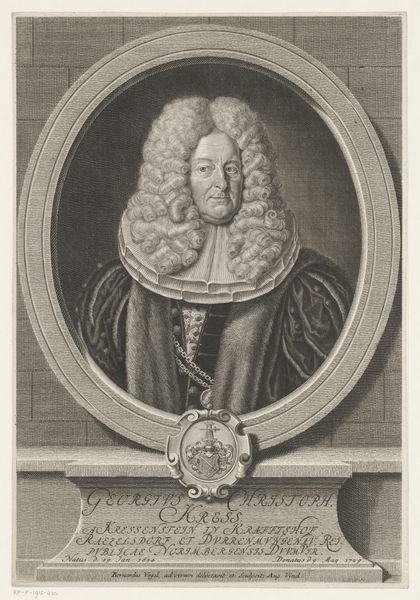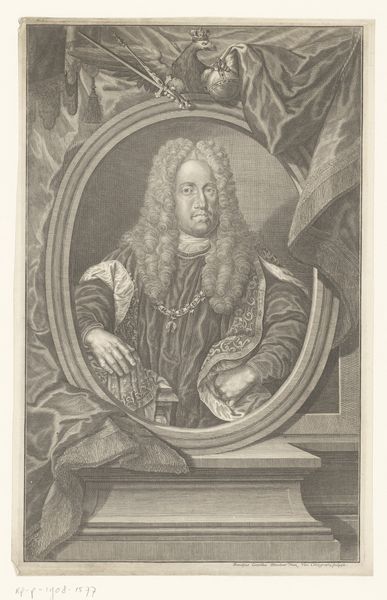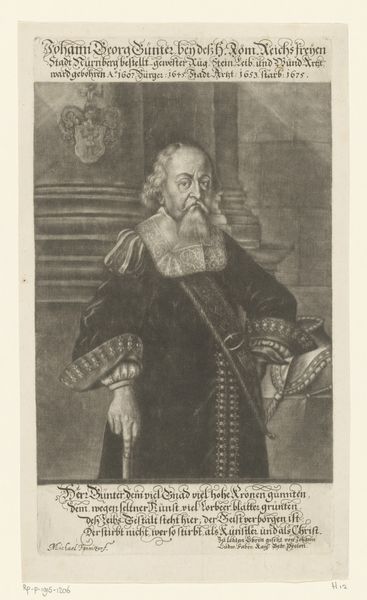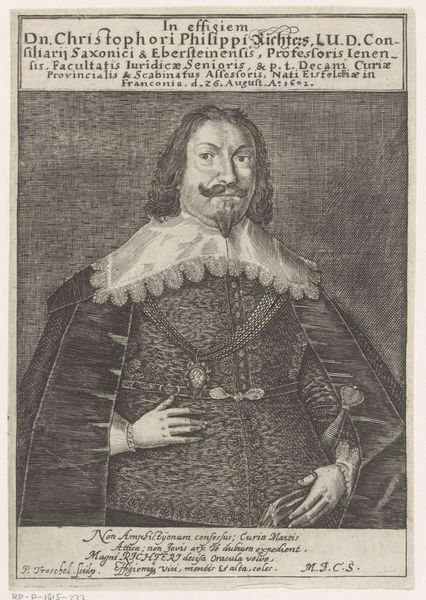
Portrait of Petrus Albertus van der Parra, Governor-General of the Dutch East India Company c. 1762
0:00
0:00
Dimensions: height 108.5 cm, width 93 cm, depth 9.5 cm
Copyright: Rijks Museum: Open Domain
Curator: We're looking at an oil painting from around 1762, titled "Portrait of Petrus Albertus van der Parra, Governor-General of the Dutch East India Company." It's an anonymous work, placing him firmly in the Dutch Golden Age style. Editor: He looks...substantial. The dark background against his reddish robe, the intricate patterns in what I presume is expensive fabric—it gives the impression of weight, both literally and figuratively. Heavy with power, maybe a touch of melancholy? Curator: The fabric is fascinating, isn't it? Think of the global trade routes implied in the textures, the dyes...it's all so intrinsically linked to colonialism and mercantile power. It wasn’t just pretty clothes, it was material wealth acquired through complex, often brutal, means. Editor: Precisely! It makes you wonder about the specific workshop responsible for that brocade, doesn't it? Was it produced in the Netherlands or was it part of the loot traded from overseas? Did enslaved people contribute to the creation of this gorgeous textile and did they suffer at its expense? Curator: It is powerful, seeing van der Parra posed with what looks like his baton of office, almost a defiant claim of ownership, amid all that implied human cost. The little details like the faint coat-of-arms are markers of status and aspiration, symbols of a system designed to perpetuate itself. He holds this long staff; it could be viewed as a means to maintain control, perhaps as an emotional substitute for connection. Editor: Look at the degradation of the material in the background too, so much deterioration over time; it mirrors the rotting of a colonial mindset, of course. All of this wealth propped up by exploitation has that sort of decaying element built right into it. This portrait feels less like a celebration, more of a haunting reflection on that legacy. Curator: I see what you mean—time has definitely complicated the picture! Now, more than two centuries later, looking at him and thinking about all that fabric carries, that's something quite extraordinary and thought-provoking. Editor: Absolutely, a gorgeous piece nonetheless! Examining colonial art this way offers a perspective into a pivotal time of economic boom but deep societal issues.
Comments
No comments
Be the first to comment and join the conversation on the ultimate creative platform.
